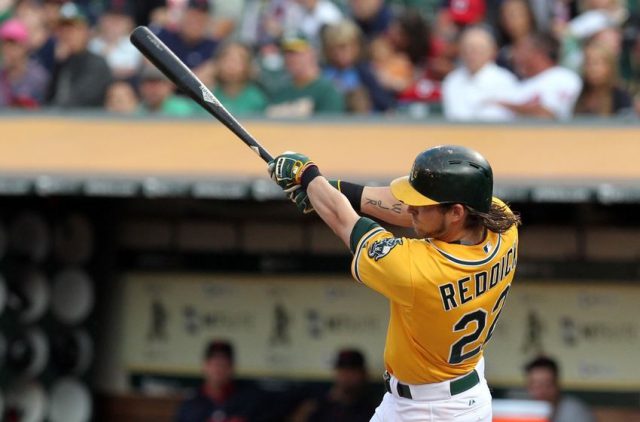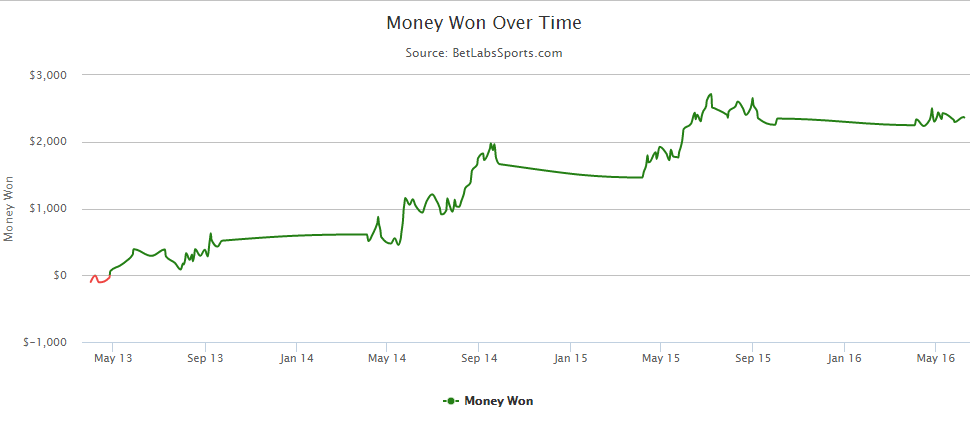
Should MLB Bettors Also Avoid the Trendy Underdog?
For over a decade, the team at Sports Insights has gone to great lengths to conclusively prove that betting against the public will produce positive returns for sports bettors. The strategy is incredibly simple; whichever team the public is loading up on, simply bet the other side. This philosophy has been the backbone of our highly profitable contrarian plays, which have earned +124.1 units since their inception in 2004.
Between 2005 and 2010, teams receiving less than 30% of moneyline bets at our contributing sportsbooks posted a 1.6% return on investment (ROI) over 5000+ games. In the five and a half years since, those same teams have produced a -1.9% over a similar sample size.
These results aren’t meant to deter bettors from utilizing public betting trends to find value in the sports betting marketplace, but it does indicate that purely betting against the public is not always a winning strategy.
[ Receive steam moves, smart money, contrarian plays and our profitable Best Bet picks ]
I’m always looking for new angles and adjusting to an ever-changing sports betting landscape. Our annual MLB betting against the public reports not only updates the optimal threshold for contrarian betting, they also examine high-level trends and sharp money indicators. Our goal is to keep bettors one step ahead of the oddsmakers.
In the past, I have highlighted several profitable contrarian betting strategies that include our betting percentages, most of which involve exploiting public perception. Casual bettors, also known as squares, have a strong tendency to overreact to recent events. They love betting on the league’s top teams, especially if they’re coming off a blowout victory or are in the midst of a winning streak. They’re also exceptionally prone to hammering the favorite.
My research found that since the start of the 2005 season, a majority of public bettors have taken the favorite in 22,711 of 26,684 MLB games. That means that at least half of moneyline bettors have taken the underdog in less than 15% of all games.
It’s rare that the majority of public bets take the underdog, but our past analysis has uncovered tremendous value in these games. In the past year, I have explained that contrarian favorites have offered value for NBA and NCAAB bettors — especially in the postseason. I wanted to know whether this strategy would continue its success in baseball.
The initial results were underwhelming, to say the least. Over the past eleven seasons, favorites receiving less than 50% of moneyline bets had gone 2,784-2,359 (54.1%) but with a -1.3% return on investment. I also observed that there was a similar drop off in returns following the conclusion of the 2010 season.
Although these results were somewhat disappointing, they weren’t entirely surprising. Past research has revealed a direct correlation between the number of bets placed on a game and the value derived from betting against the public. Sportsbooks aren’t necessarily looking to encourage 50% of the action on each side, but they will look to mitigate risk if they’re receiving incredibly one-sided action on a heavily bet game.
A recent article explained why bettors should always fade trendy underdogs during the NBA Playoffs, and the results have been astounding. Favorites receiving less than 40% of spread bets have gone 86-56 ATS (60.6%) including a 3-0 ATS record during the 2016 postseason. Interestingly, favorites receiving less than 50% of moneyline bets have gone 48-25 with an 18.7% ROI during the MLB playoffs.
Unfortunately, most regular season baseball games don’t receive many bets which means I needed to find another way to extract value. One of the easiest ways to do that is by taking favorites in games with low totals.
Previously, I have discussed the value of taking underdogs in games with high totals since more scoring leads to more unpredictability and that disproportionately benefits the team getting plus money. Conversely, less scoring leads to more predictability and that has overwhelmingly benefitted the favorite.
The table below displays the performance of favorites receiving less than 50% of moneyline bets as the closing total decreases.
| Total | Record | Win Rate | Units Won | ROI |
|---|---|---|---|---|
| All | 2784-2359 | 54.1% | -65.42 | -1.3% |
| 8.5 or less | 1681-1413 | 54.3% | -36.34 | -1.2% |
| 8 or less | 1200-965 | 55.4% | +17.30 | 0.8% |
| 7.5 or less | 825-654 | 55.8% | +23.26 | 1.6% |
| 7 or less | 395-308 | 56.2% | +18.00 | 2.6% |
You can see that the winning percentage and return on investment both steadily increase as the closing total drops. Although the highest ROI comes when the closing total is 7 or less, there’s a larger sample size and more units won when the closing total is 7.5 or less. It was also important to see that teams fitting these criteria had posted a 1.3% ROI since 2011.
Knowing that contrarian favorites with low totals had been consistently profitable, I wanted to examine increasingly lopsided public betting. Much to my delight, I found that there was a direct correlation between decreasing public support and increasing returns.
The table below displays the performance of MLB favorites when the closing total is 7.5 or less.
| Public Betting | Record | Win Rate | Units Won | ROI |
|---|---|---|---|---|
| All | 4698-3447 | 57.7% | -103.05 | -1.3% |
| <50% | 825-654 | 55.8% | +23.26 | 1.6% |
| <40% | 328-247 | 57.0% | +30.30 | 5.3% |
| <35% | 172-119 | 59.1% | +28.73 | 9.9% |
Once again I found that it has been profitable to “fade the trendy underdog” and take the contrarian favorite. It was especially encouraging to see that this system had produced the best returns in recent years.
Since the start of the 2013 season, favorites receiving less than 35% of moneyline bets have gone 106-67 (61.3%) with a 13.7% ROI when the closing total is 7.5 or less. That includes positive return in each of the past four seasons.
Teams receiving less than 35% of moneyline bets have produced a 0.9% return on investment, but it’s only when looking at favorites with low totals that the returns skyrocket.
I would also like to note that most favorites receiving less than 35% of moneyline bets have been small favorites. That makes sense because most casual bettors are highly averse to taking large moneyline underdogs. In fact, more than 75% of teams fitting these criteria have been favorites of -120 or smaller. What’s even more interesting is the schism between small favorites and large favorites.
According to my research, favorites of -120 or smaller have produced a 2.8% ROI while favorites or -121 or greater have produced a -4.8% ROI. Favorites between -121 and -150 have performed particularly poorly with a -7.1% ROI.
It’s highly uncommon to see a favorite that’s not a majority of public support, and it’s incredibly rare to find a favorite receiving less than 35% of moneyline bets. There won’t be many teams that fit these criteria, but it does show several things:
- There has been value fading trendy underdogs, especially ‘dogs receiving at least 65% of ML bets.
- Favorites have had an advantage in games with low totals (7.5 or less). There are still many effective ways to bet against the public, but it’s not enough to simply load up on the day’s least popular teams.
- Small contrarian favorites (-120 or smaller) have been particularly profitable.
- Looking for the latest odds, injuries and public betting trends? Don’t forget to bookmark our free MLB odds page for all of your sports betting needs.
Have any questions for the staff at Sports Insights? Utilize our live chat to speak with a customer service representative or e-mail us at help@sportsinsights.com.


No Comments